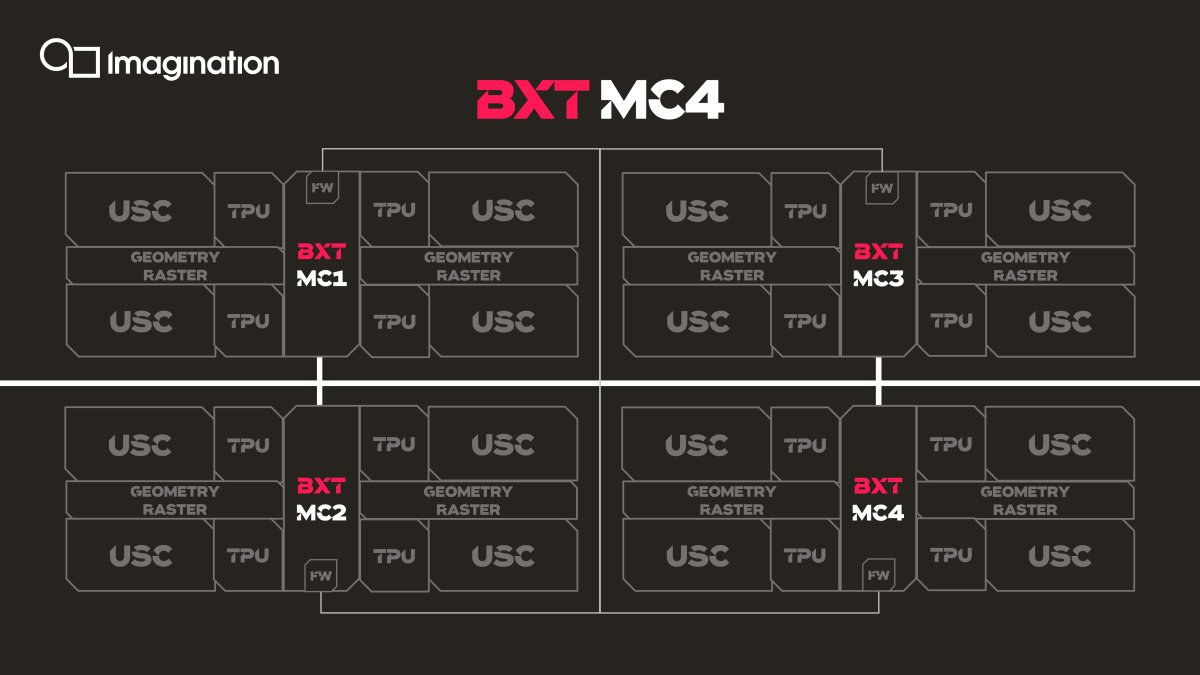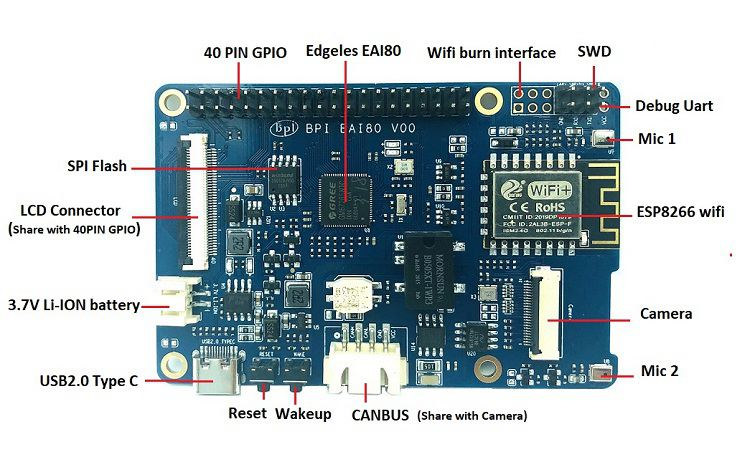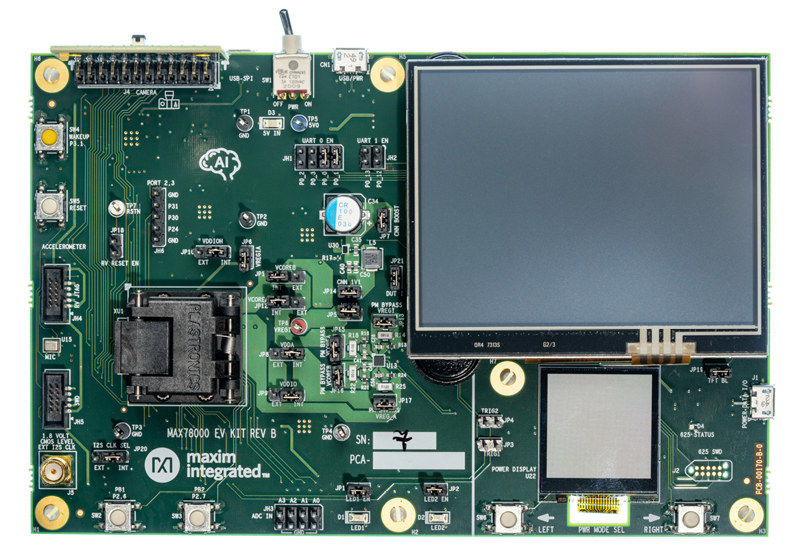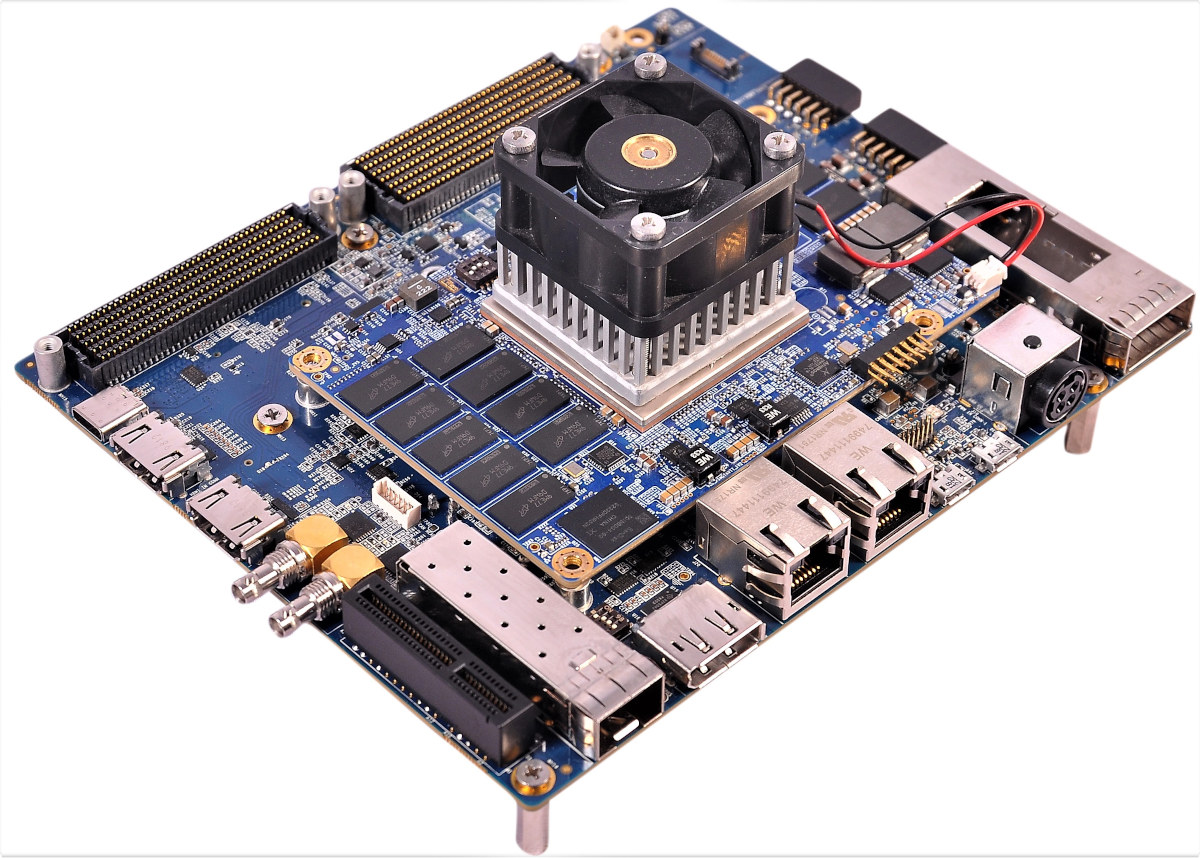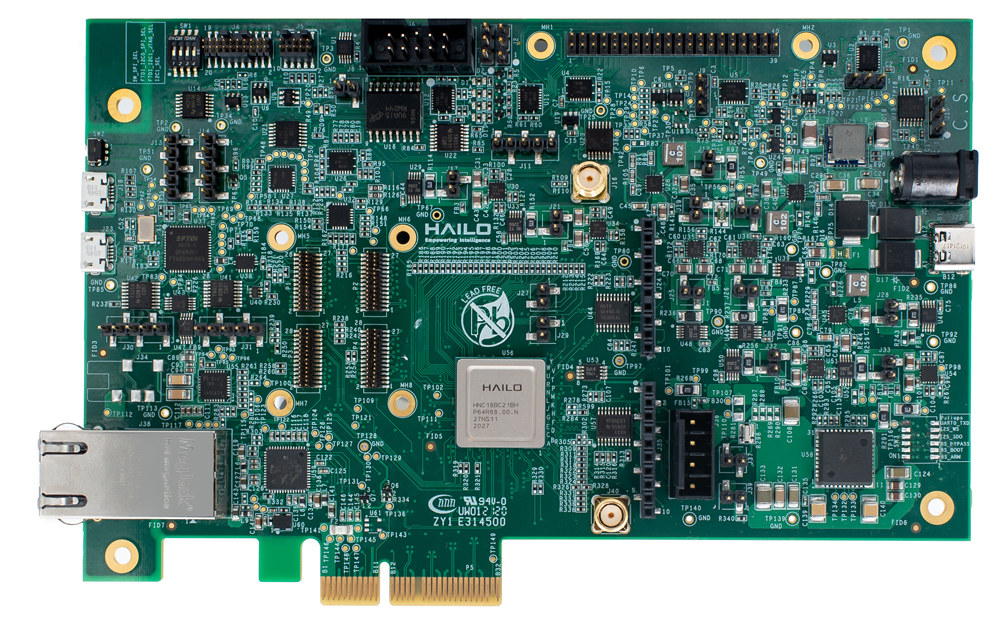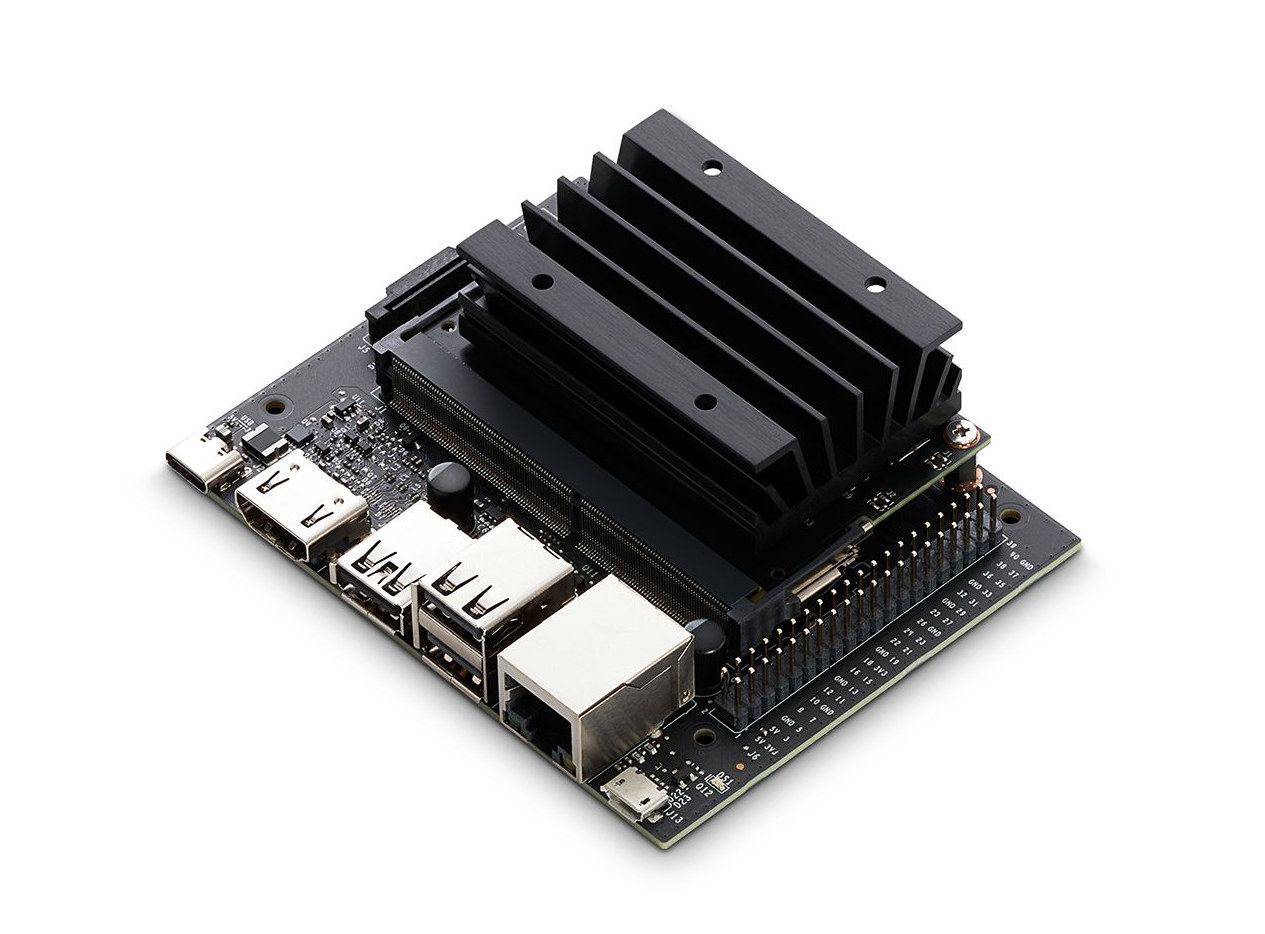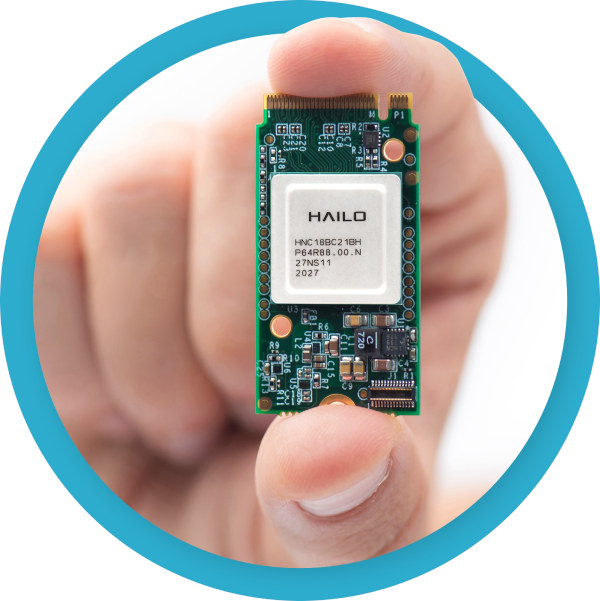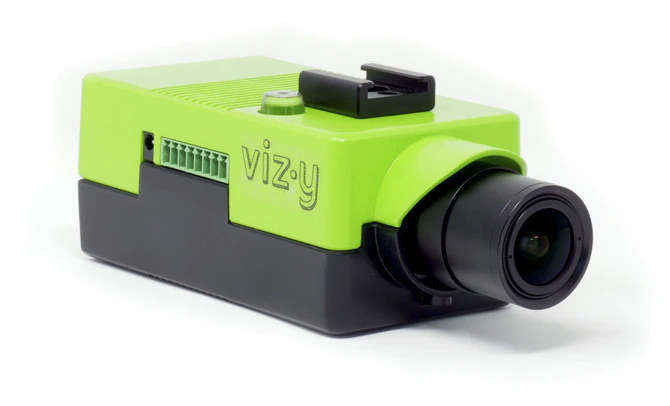Last year, Imagination Technologies unveiled IMG A-Series GPU family scaling from low-power IoT to mobile and high-performance server applications with up to 2.5 times the performance of the earlier PowerVR 9-series GPUs, as well as eight times faster AI processing and 60% less power under similar conditions. While I’m not aware of any SoCs announced with the new IMG A-Series GPU yet, the company has already announced the next-gen IMG B-Series GPU family with up to 4 times the multi-core performance thanks to decentralized multi-core technology, 30% lower power consumption, and 2.5 times the fill rate. The company offers four types of IM B-series GPU, each optimized for specific applications IMG BXE for high-resolution displays – From 1 up to 16 pixels per clock (PPC) BXE scales from 720p to 8K for UI rendering and entry-level gaming. IMG BXM designed for mid-range mobile gaming and complex UI solutions for DTV […]
$16 Banana Pi BPI-EAI80 Cortex-M4F Board Embeds AI Accelerator, WiFi Module
Last April, we wrote about Edgeless EAI-Series dual Arm Cortex-M4 MCU equipped with a 300 GOPS CNN-NPU for AI at the very edge as we had discovered the chip in an upcoming Banana Pi board. It turns out Banana Pi BPI-EAI80 development board powered by Edgeless EAI80 AI microcontroller has just launched for $16 on Aliexpress, or you could get a complete kit with a touchscreen display, a camera, and a USB power supply for $80. Banana Pi BPI-EAI80 development board specifications: System-in-Package – Edgeless EIA80 dual-core Cortex-M4F microcontroller @ 200MHz with 300GOPS AI accelerator (CNN-NPU), 384KB of SRAM including 256KB for CNN-NPU, and 8MB SDRAM Storage – SPI flash Display I/F – LCD connector up to 1024×768 Camera I/F – 1x DVP camera interface Audio – 2x onboard microphones Connectivity – 2.4GHz 802.11b/g/n WiFI 4 using ESP8266 module USB – 1x USB 2.0 Type-C port Expansion 40-pin GPIO header […]
MAX78000 RISC-V & Cortex-M4F MCU enables IoT artificial Intelligence in battery-powered devices
Now even endpoints like sensors are capable of running basic artificial intelligence workloads thanks to microcontroller-class chips with built-in AI accelerators or instructions such as Kneron KL720 Arm Cortex-M4 AI SoC, GAP8 RISC-V IoT processor, or Cortex-M55 MCU core coupled with Ethos U55 MicroNPU. Maxim Integrated has now launched its own AI capable microcontroller with MAX78000 combining a Cortex-M4F core, a 32-bit RISC-V core, and a CNN accelerator enabling AI inferences at less than 1/100th the energy or 100 times the speed of software solutions making especially suited for battery-powered AI applications. MAX78000 specifications: Ultra-Low-Power microcontrollers Arm Cortex-M4F core with FPU Up to 100MHz with 512KB Flash and 128KB SRAM 32-Bit RISC-V ultra-low-power co-processor up to 60MHz Neural Network Accelerator optimized for Deep Convolutional Neural Networks (CNN) 442k 8bit Weight Capacity with 1,2,4,8-bit Weights Input Image Size up to 1024 x 1024 pixels Network Depth up to 64 Layers Layer […]
Xilinx Zynq UltraScale+ ZU19EG MPSoC Devkit Offers HDMI 2.0, 10GbE, High-Speed Transceivers
iWave Systems iW-RainboW-G35D is a development kit powered by Xilinx Zynq UltraScale+ ZU19EG Arm Cortex-A53 and FPGA MPSoC coupled with 4GB DDR4 RAM with ECC for the processing system (PS) & 4GB dual-channel DDR4 RAM for the programmable logic (PL). The board is equipped with HDMI 2.0 output/input ports supporting 4Kp60 UHD resolutions, a 10GbE SFP+ cage, FMC+, FMC, FireFly, and QSFP connectors for high-speed transceivers, and more. iW-RainboW-G35D specifications: iW-RainboW-G35M SoM Xilinx Zynq Ultrascale+ ZCU19EG MPSOC (-1 speed) with four Cortex-A53 cores @ 1200 MHz, dual-core Arm Cortex-R5 MPCore up to 600MHz, FPGA fabric with 1,143K logic cells, and Arm Mali-400 MP2 GPU (lower-end ZCU17EG and ZCU11EG MPSoC are also available) System Memory 4GB DDR4 RAM for PS 4GB Dual DDR4 RAM for PL Storage – 8GB eMMC Flash (for boot code) Transceivers PS-GTR Transceivers x 4 @ 6Gbps PL-GTH Transceivers x 32 @ 16.3Gbps PL-GTY Transceivers x 16 […]
Learn more about Hailo-8 AI accelerator and understanding AI benchmarks
Last week we wrote about Hailo-8 M.2 card delivering up to 26 TOPS of AI performance, and comparing well against Google Edge TPU and Intel Movidius Myriad X both in terms of footprint, performance, and efficiency. I’ve since then had a conference call with Liran Bar, VP of Business Development for Hailo, where we had time to discuss more about Hailo’s AI solutions, and how to interpret & understand AI benchmarks that may be misleading in many instances. Hailo-8 Architecture In the first post, we noted the chip managed to get the extra performance and efficiency thanks to a “proprietary novel structure-driven Data Flow architecture instead of the usual Von Neumann architecture”. But that’s a bit abstract, so Liran told me one of the key reasons for the performance improvement is that RAM is self-contained without the need for external DRAM like other solutions. This decreases latency a lot and […]
NVIDIA Jetson Nano 2GB Developer Kit Launched for $54 and up
NVIDIA Jetson Nano Developer kit was introduced in March 2019 for $99. With a quad-core Cortex-A57 processor, a 128-core Maxwell GPU, and 4GB LPPDR4 RAM, it’s a great low-cost AI platform as we wrote in our Jetson Nano getting started guide where we show how to perform inferences on still images and an RTSP video stream. The company has now gone further in providing an affordable AI computer for developers with the launch of NVIDIA Jetson Nano 2GB Developer Kit with similar features except for the 2GB RAM, and pricing starting at $54 without a wireless adapter or $59 with 802.11b/g/n/ac WiFi 5 USB dongle. Pre-orders are open on sites like Amazon or Seeed Studio and shipping is scheduled to start at the end of the month. If we look at the photo above, there are very few differences against the $99 version, and indeed most of Jetson Nano 2GB […]
Hailo-8 M.2 and mini PCIe AI accelerator cards deliver up to 26 TOPS
[Update Sep 3, 2020: The post has been edited to correct Google Coral M.2 power consumption] If you were to add M.2 or mPCIe AI accelerator card to a computer or board, you’d mostly have the choice between Google Coral M.2 or mini PCIe card based on the 4TOPS Google Edge TPU, or one of AAEON AI Core cards based on Intel Movidius Myriad 2 (100 GOPS) or Myriad X (1 TOPS per chip). There are also some other cards like Kneron 520 powered M.2 or mPCIe cards, but I believe the Intel and Google cards are the most commonly used. If you ever need more performance, you’d have to connect cards with multiple Edge or Movidius accelerators or use one M.2 or mini PCIe card equipped with Halio-8 NPU delivering a whopping 26 TOPS on a single chip. Hailo-8 M.2 accelerator card key features and specifications: AI Processor – […]
Vizy AI camera runs Tensorflow, OpenCV, PyTorch on Raspberry Pi 4 (Crowdfunding)
We previously covered Charmed Labs PIXY2 computer vision camera based on an NXP LPC4330 microcontrollers that worked with Arduino, Raspberry Pi, and other development boards. The company is now back with a fully integrated more powerful solution with Vizy AI camera featuring a Raspberry Pi 4 SBC with up to 8GB RAM. Vizy AI camera key features and specifications: SBC – Raspberry Pi 4 with Broadcom BCM2711 quad-core Arm Cortex-72 processor, up to 8 GB RAM Camera – High-resolution camera based on Sony iMX477 12.3 MP sensor that can capture at over 300 frames/second and support both daytime and nighttime viewing; Both M12 and C/CS lenses are supported Video Output – 2x micro HDMI ports Audio – Analog stereo audio port Networking – Gigabit Ethernet, dual-band WiFi 5, and Bluetooth 5.0 USB – 2x USB 3.0 ports, 2x USB 2.0, 1x USB Type-C port from Raspberry Pi 4 (But not […]


